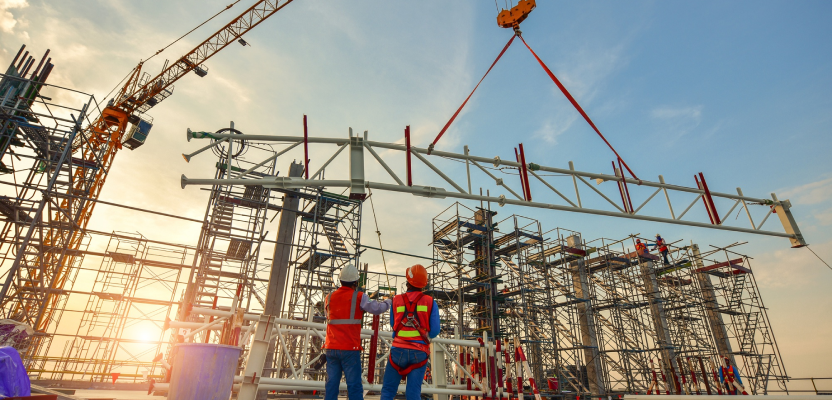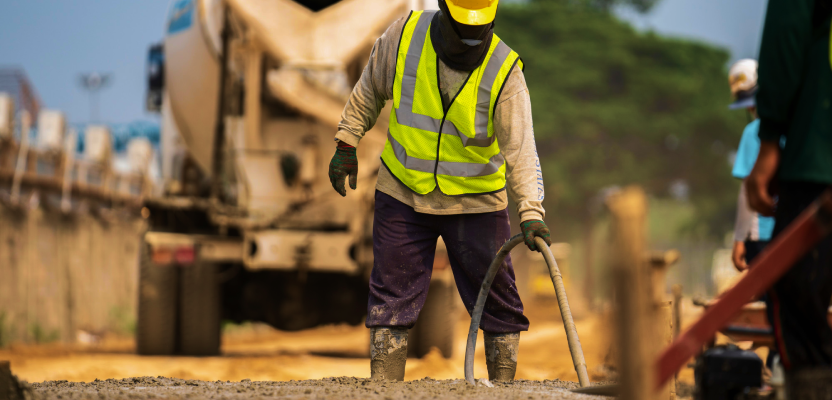Different Types of Residential Drainage Systems
Imagine a scenario where heavy rainfall causes water to pool around your home’s foundation, leading to potential structural damage.
When it comes to keeping your home safe and dry, having the proper residential drainage system in place is crucial.
Different types of drainage systems can be tailored to suit various landscapes and weather conditions, ensuring the effective removal of excess water.
Understanding the best drainage system for your property can prevent costly water-related issues in the future.
Explore some of the most common residential drainage systems and discuss their pros and cons.
French Drains
French drains are one of the most popular drainage systems for residential homes. They consist of a trench filled with gravel or rock that is covered with a perforated pipe. The pipe allows water to flow away from the home and into a designated drainage area. French drains are effective at preventing water buildup around the foundation of a home, which can lead to water damage and mold growth.
Pros:
1. Effective water management: French drains are designed to efficiently redirect water away from your property, helping to prevent water damage and flooding. These systems can handle large volumes of water, making them a reliable solution for managing drainage issues.
2. Versatile installation options: French drains can be installed in a variety of locations, including around foundations, basements, and landscaping features. This versatility makes them suitable for a wide range of properties and drainage needs.
3. Low maintenance: Once installed, French drains require minimal maintenance to keep them functioning properly. With proper care, these systems can provide long-lasting water management solutions for your property.
4. Cost-effective: While the initial installation cost of a French drain system can be significant, the long-term benefits of effective water management and prevention of water damage can outweigh the upfront investment. In the long run, a French drain can save you money on repairs and property damage.
Cons:
1. Installation complexity: Installing a French drain system can be a complex and labor-intensive process. It often requires excavation of the area, laying down drainage pipes, and backfilling with gravel or other materials. This can be a time-consuming and expensive undertaking.
2. Potential for clogging: Over time, French drains can become clogged with debris, roots, or silt, impeding their ability to effectively redirect water. Regular maintenance and inspection are necessary to prevent clogs and ensure the system functions properly.
3. Landscaping disruption: The installation of a French drain system can result in disruption to your landscaping and outdoor areas. Excavation and installation can damage plants, grass, and other features, requiring additional time and resources to restore the area.
4. Limited aesthetic appeal: French drains are functional in nature and often not the most visually appealing addition to your property. While they are effective at managing water drainage, they may not enhance the aesthetics of your outdoor space.
Surface Drains
Surface drains are designed to collect and redirect water that accumulates on the surface of the ground. They typically consist of a grate or catch basin that is connected to a pipe that leads to a drainage area. Surface drains are effective at preventing flooding and water damage in areas with poor drainage.
Pros:
1. Prevents Flooding: One of the main benefits of surface drains is that they help to prevent flooding by quickly removing excess water from your property. This can help to protect your home and property from water damage during heavy rainstorms or snowmelt.
2. Reduces Soil Erosion: Excess water runoff can cause soil erosion, which can damage the landscape of your property. Surface drains help to redirect water away from vulnerable areas, reducing the risk of soil erosion.
3. Improves Drainage: Surface drains are designed to efficiently collect and divert water away from your property, improving overall drainage and preventing water buildup in low-lying areas.
Cons:
1. Installation Costs: Installing a surface drain system can be costly, especially if you have a large property or complex drainage needs. The cost of excavation, materials, and labor can add up quickly.
2. Maintenance: Like any drainage system, surface drains require regular maintenance to ensure they continue to function properly. This can include cleaning out debris, inspecting for clogs, and repairing any damage that may occur over time.
3. Aesthetics: Surface drains can be unsightly, especially if they are installed in highly visible areas of your property. While there are decorative options available, they may not be as effective at managing water runoff.
Sump Pump Systems
Sump pump systems are typically used in homes with basements or crawl spaces that are prone to flooding. They consist of a sump pit that collects water from around the home, and a pump that is triggered to remove the water when the pit reaches a certain level. Sump pump systems are effective at preventing water damage in low-lying areas of a home.
Pros:
1. Prevents flooding: The primary benefit of a sump pump system is that it helps prevent basement flooding. By automatically removing water from the sump pit, the system helps keep your basement dry and free from water damage.
2. Protects your belongings: Flooding can cause significant damage to your belongings stored in the basement. A sump pump system can help protect your possessions from water damage by keeping the area dry.
3. Increases property value: Homes with sump pump systems are more attractive to potential buyers because they offer an added layer of protection against flooding. Installing a sump pump system can increase the value of your property and make it more sellable in the future.
4. Low maintenance: Once installed, sump pump systems require minimal maintenance to keep them running smoothly. With regular inspections and occasional testing, a sump pump system can provide reliable protection for years to come.
Cons:
1. Cost: One of the main drawbacks of sump pump systems is the upfront cost of installation. Depending on the type of system and the size of your basement, the cost can range from a few hundred to a few thousand dollars. However, when compared to the potential cost of water damage repairs, the investment may be worth it in the long run.
2. Power outages: Sump pump systems rely on electricity to function, which can be a problem during power outages. To prevent flooding during power outages, homeowners can install a backup battery or generator to keep the system running.
3. Noise: Some sump pump systems can be noisy when they are in operation. If you have a finished basement or spend a lot of time in the space, the noise may be a downside to consider.
Gutter and downspout extensions
Gutters and downspouts are an essential part of any home’s drainage system, helping to divert rainwater away from your house and prevent water damage. But sometimes, the standard gutter and downspout system may not be enough to effectively manage water runoff, especially during heavy rainstorms. This is where gutter and downspout extensions come into play.
Gutter and downspout extensions are additional components that can be added to your existing gutter system to improve its functionality. These extensions help to direct water further away from your home’s foundation, landscaping, and walkways, reducing the risk of water damage and erosion.
Pros:
1. Improved water drainage: Gutter and downspout extensions help to effectively channel water away from your home, preventing it from pooling around the foundation and causing damage.
2. Reduced risk of water damage: By directing water further away from your home, gutter and downspout extensions can help to protect your foundation, landscaping, and walkways from water-related damage.
3. Easier maintenance: With gutter and downspout extensions, you may find that your gutters require less frequent cleaning and maintenance, as they are less likely to become clogged with debris.
4. Increased curb appeal: Gutter and downspout extensions can be designed to blend seamlessly with your home’s exterior, enhancing its overall aesthetic appeal.
Cons:
1. Cost: Installing gutter and downspout extensions can be a significant investment, especially if you have a large roof area that requires multiple extensions.
2. Maintenance: While gutter and downspout extensions can reduce the frequency of gutter cleaning, they still require regular maintenance to ensure they are functioning properly.
3. Aesthetics: Some homeowners may find gutter and downspout extensions to be unsightly or detract from the appearance of their home.
4. Potential for blockages: In some cases, gutter and downspout extensions can become clogged with debris, which may impede water flow and require additional maintenance.
Importance of Residential Drainage Systems
Residential drainage systems play a crucial role in preventing water damage to your property. Effective water management is essential to ensure that excess water is properly directed away from your home, preventing flooding and potential structural harm. By implementing a well-designed drainage system, you can safeguard your property against water-related issues that may arise during heavy rainfall or snowmelt.
Properly maintained drainage systems help in preventing flooding by efficiently carrying excess water away from your home’s foundation. Without adequate drainage, water can accumulate near your property, leading to potential water infiltration into your basement or crawl space. This can result in costly water damage repairs and mold issues if left unaddressed.
Benefits of Proper Drainage Systems
A well-designed and maintained drainage system helps to redirect rainwater away from your property, preventing water from pooling around your foundation, basement, or landscaping.
One of the biggest benefits of a properly functioning drainage system is the prevention of water damage to your home. If water is allowed to accumulate around your foundation, it can seep into your basement or crawl space, causing mold growth, rotting wood, and structural damage. This can lead to costly repairs and potential health hazards for you and your family. By ensuring that rainwater is efficiently redirected away from your home, you can avoid these issues and protect your investment.
Proper drainage also helps to prevent erosion of your landscaping and driveways. When water is allowed to pool in certain areas of your yard, it can wash away soil and cause unsightly gullies to form. This can damage the aesthetic appeal of your property and make it more difficult to maintain your lawn and garden. By installing a drainage system that channels water away from these vulnerable areas, you can preserve the beauty and functionality of your outdoor spaces.
A well-designed drainage system can also help to prevent insect infestations and mold growth. Standing water attracts pests like mosquitoes and other insects, which can carry diseases and be a nuisance to you and your family. Excess moisture in your home can also create the perfect breeding ground for mold and mildew, which can pose health risks to you and your loved ones. By addressing drainage issues promptly and effectively, you can reduce the likelihood of these problems occurring.






